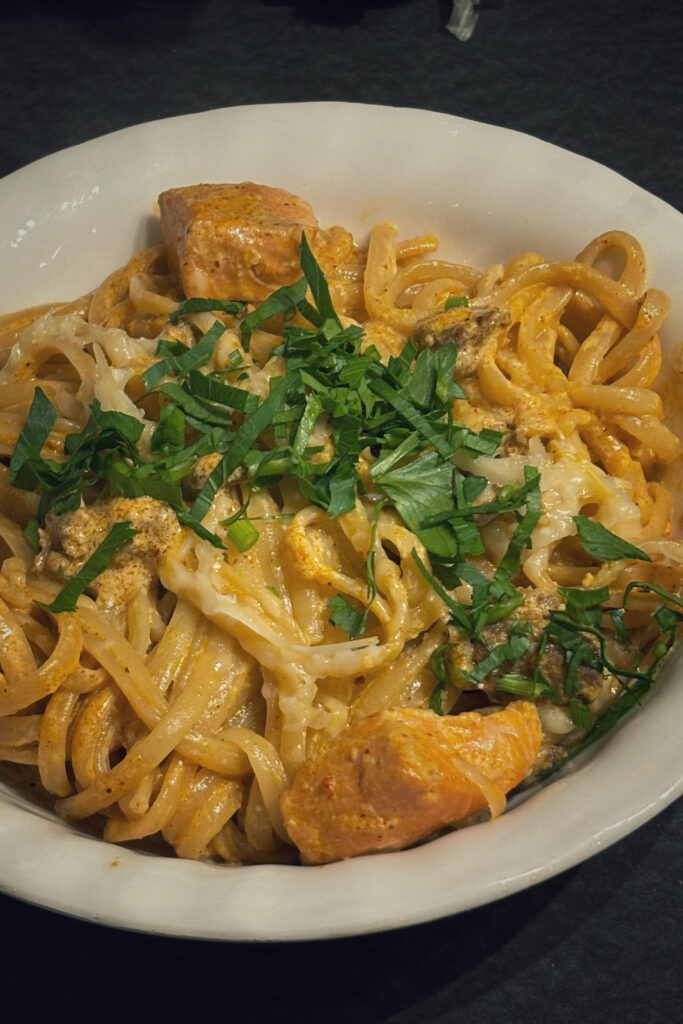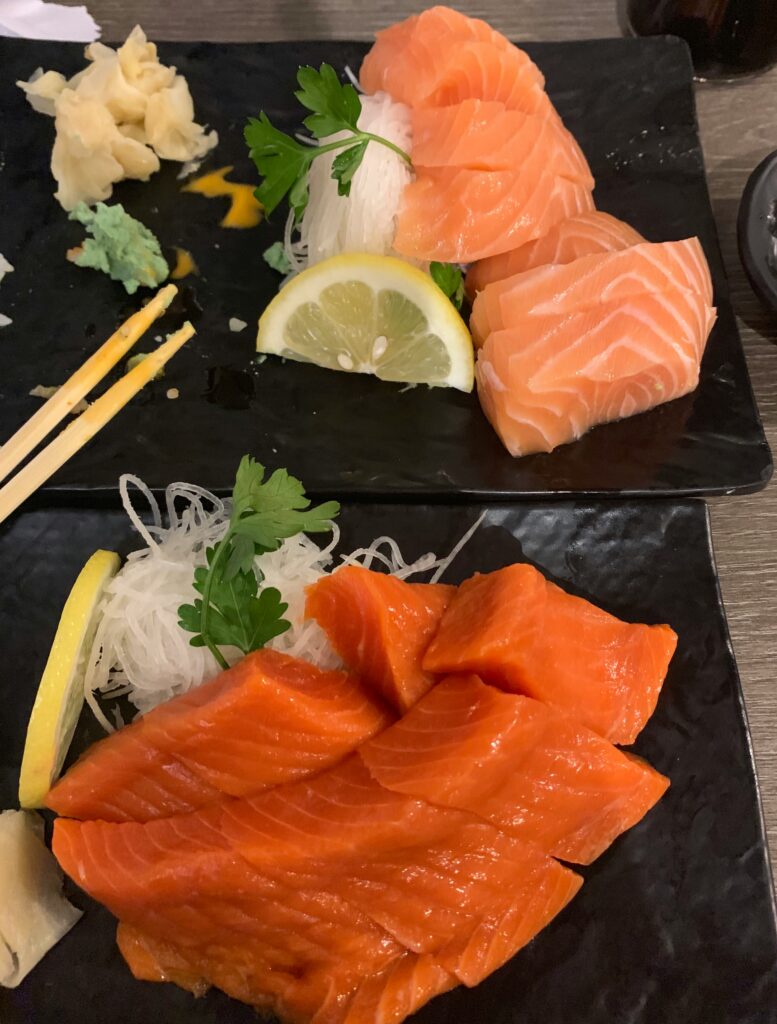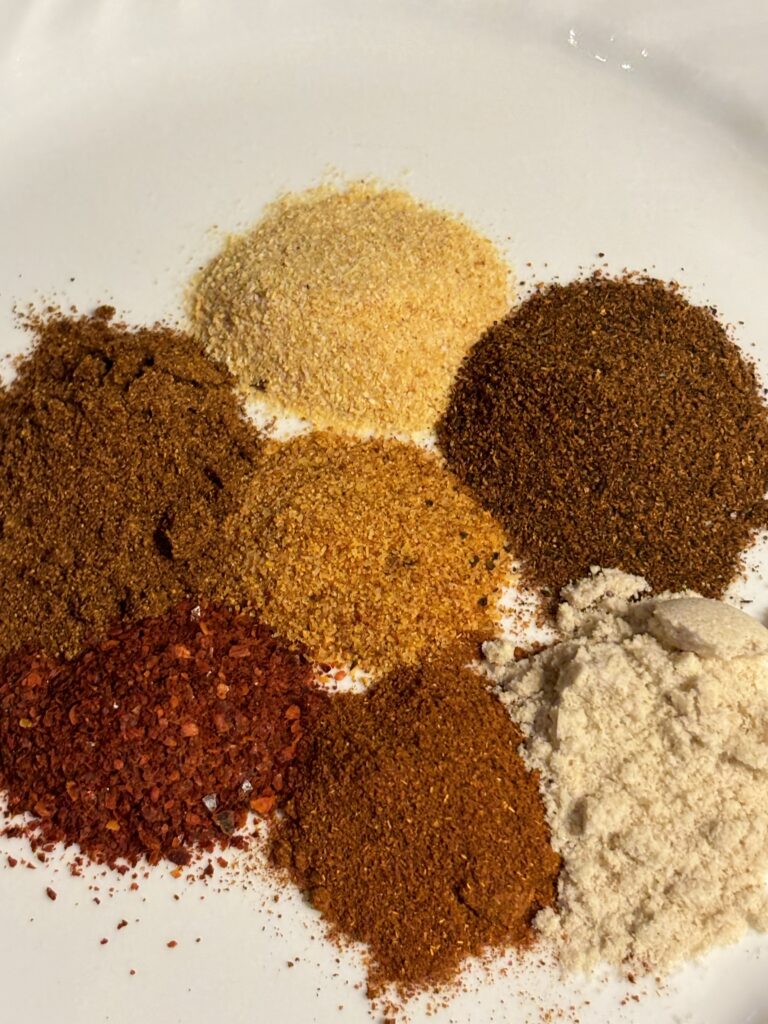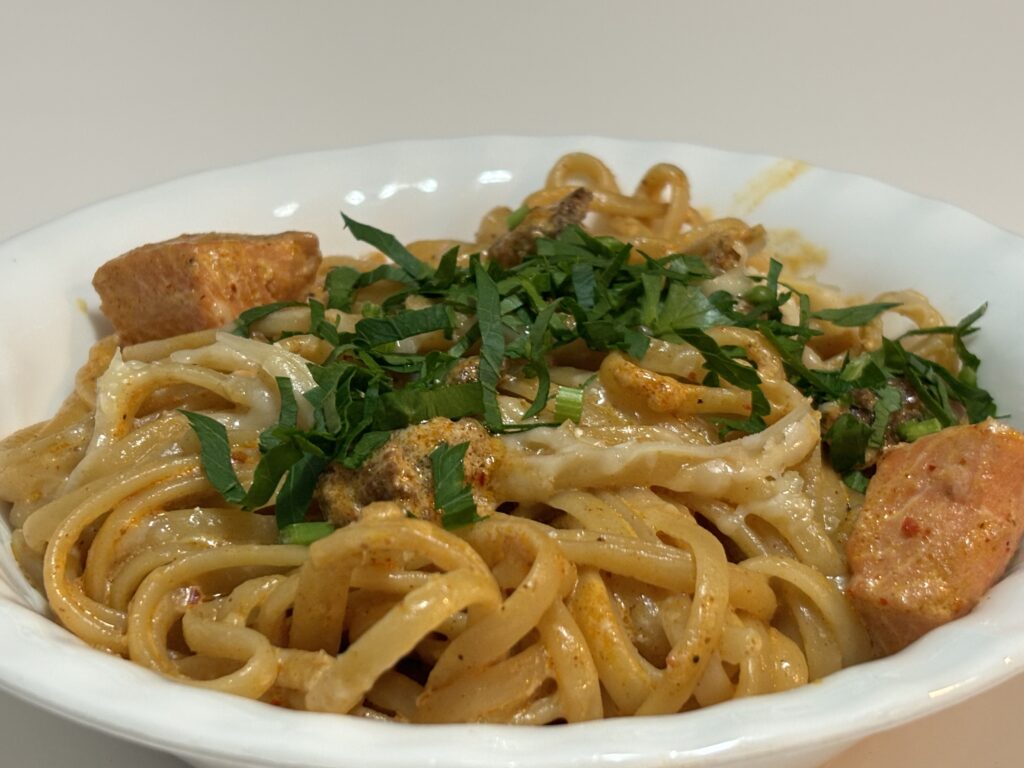Wild salmon is a treasure of the culinary world, prized for its rich flavor, vibrant color, and nutritional value. For those of us blessed to live in regions where we can catch different salmon species throughout the year, wild salmon is a delicious and meaningful part of the local food culture. Not all salmon is created equal, however, as there are several distinct types, each with unique characteristics and flavors. Understanding the differences in their meat, as well as the benefits of wild-caught versus farmed salmon, can enhance appreciation of this remarkable fish and provide insight into choosing the best option for health and flavor. And if you’re looking for flavor, you’ve come to the right place because our recipe for wild salmon linguini is out of this world.
Jump to Recipe
Types of Wild Salmon and Flavor Profiles
There are five main species of Pacific salmon—Chinook (or King), Sockeye, Coho, Pink, and Chum—and each one has unique traits that make it suitable for different culinary applications.
1. Chinook (King) Salmon
Chinook salmon is often called “King” for good reason: it’s the largest of the salmon species, with some reaching weights of over 100 pounds. Chinook has the highest oil content of any salmon, resulting in a luxuriously rich and buttery flavor. The meat is firm and succulent, making it ideal for grilling, roasting, or even enjoying raw as sashimi. Its flavor is robust and satisfying, making it a popular choice among chefs and seafood aficionados.
2. Sockeye Salmon
Known for its deep red flesh, Sockeye salmon is often prized for its bold flavor, which many describe as having a distinctly “salmony” taste. While it has less fat than King salmon, it’s still flavorful and holds up well to various cooking methods, including grilling, baking, and smoking. The dense meat and vibrant color of Sockeye also make it ideal for visually striking dishes, such as poke bowls or salmon burgers.
3. Coho Salmon
Coho salmon, also called “Silver” salmon, falls between Chinook and Sockeye in terms of flavor and oil content. It has a milder, more delicate flavor that appeals to a wide range of palates. Coho’s moderately firm flesh makes it an excellent choice for grilling or baking, and it’s especially delicious in recipes with bold seasonings, like a Cajun rub or spicy marinade. Coho’s mildness allows it to adapt well to diverse cooking techniques and flavor profiles.
4. Pink Salmon
Pink salmon, also known as “Humpback” due to the characteristic hump on its back during spawning, is the most abundant and smallest of the Pacific salmon. It has a lower fat content and milder flavor than the other types, making it perfect for light dishes, such as salads or casseroles. Pink salmon’s affordability and mildness also make it popular in canned form, where it can be used in various dishes like salmon patties or pasta.
5. Chum Salmon
Chum salmon is known for its mild flavor and lean meat, making it a suitable option for budget-friendly dishes. It’s often used in smoked products or for caviar due to its large roe. While it may lack the richness of King or Sockeye salmon, Chum has its place in recipes that call for a subtler taste or as a complement to more intense seasonings.

Wild vs. Farmed Salmon: Key Differences
Nutritional Profile
Wild-caught salmon is generally higher in omega-3 fatty acids, which are essential for heart and brain health. These beneficial fats are developed naturally as wild salmon feed on a diet of algae and smaller marine organisms. Farmed salmon, on the other hand, may contain a less diverse range of nutrients and lower levels of omega-3s, as they are typically fed a controlled diet of pellets that may lack the variety of a natural marine diet.
Environmental Impact
One of the primary concerns with farmed salmon is the environmental impact of fish farming. Salmon farms often have densely packed enclosures that can lead to waste buildup and disease transmission, which can harm local ecosystems and wild fish populations. Wild-caught salmon, while also subject to careful regulations, is harvested from natural waters, and, when managed sustainably, does not carry the same environmental risks associated with farming practices.
Flavor and Texture
Wild salmon’s flavor and texture are markedly different from that of farmed salmon. The meat of wild-caught salmon tends to be firmer and less fatty than farmed, giving it a more nuanced and complex taste. Wild salmon’s flavor is influenced by its natural diet and lifestyle, resulting in subtle variations between species and even between individual fish based on their region and diet. Farmed salmon, on the other hand, is often less flavorful, with a more uniform, softer texture due to its controlled diet and limited exercise.
Why Choose Wild Salmon?
The benefits of wild salmon go beyond just taste. Choosing wild-caught salmon supports sustainable fishing practices, preserves biodiversity, and helps maintain the natural balance in aquatic ecosystems. It also promotes better nutritional intake, with a more natural source of omega-3 fatty acids and fewer contaminants.
In addition, the seasonal availability of wild salmon can be a joy to experience, as different species peak at various times of the year. By catching and preparing salmon fresh from the wild, you can truly connect with the seasonal rhythms of your environment. For example, coho salmon, available from midsummer through fall, can be used in vibrant, seasonal dishes that highlight its unique flavor.
Preparing Wild Salmon: A Cajun-Style Recipe
With such variety in wild salmon species, the options for preparation are endless. One way to celebrate the natural flavor of wild salmon, especially the adaptable coho, is with a bold Cajun-style seasoning. This preparation balances the delicate, slightly sweet flavor of the coho with a punch of spices that enhance its natural taste without overpowering it.

This Cajun-style wild salmon dish is both easy and flavorful, with just the right amount of spice to complement the coho salmon’s delicate taste. It’s perfect for celebrating the taste of summer, using the salmon you caught earlier in the season. This salmon works wonderfully with the Cajun spices, creating a dish that’s as vibrant and lively as the natural waters where the fish was caught.
Conclusion
Wild salmon offers a world of flavors, textures, and nutritional benefits that far surpass the consistency of farmed options. From the rich, buttery Chinook to the mild, versatile coho, each species brings something unique to the table, especially when paired with bold, seasonal recipes like a Cajun-inspired preparation. For those who live where salmon runs are part of the local rhythm, enjoying wild salmon is more than a meal—it’s a celebration of nature’s bounty. And now, to bring these flavors to life, let’s dive into a delicious Cajun-style wild salmon recipe that highlights the unique and delicious qualities of coho salmon.
Wild Salmon Linguini
Course: MainCuisine: CajunDifficulty: Easy10
minutes20
minutesIngredients
6 ounces sausage (andoulli or chorizo)
6 oz. wild salmon (skin removed)
1/2 tbsp cayenne
1/2 tbsp red chili flakes
1/2 tbsp seasoning salt
1/2 tbsp paprika
1/2 tbsp garlic powder
1/2 tbsp chili powder
2 tbsp butter
1 tbsp chicken base or 1 boullion cube
1 tbsp chopped parsley
1/2 cup parmesan cheese
2 cups heavy cream (room temperature)
400g dry linguini
Salt, pepper to taste
Directions
- Cut salmon into bite sized strips. Set aside.
- Fry sausage and remove from pan once cooked. Set aside.
- Add spices, boullion powder and butter to the same pan, stirring until fragrant (1 min).
- Add cream to pan and stir, making sure to deglaze the bottom of it (that’s where all the flavor is!).
- Put salmon strips into cream sauce and cook through (approx 4 mins).
- Add cooked sausage.
- Cook and drain linguini and add it to the cream sauce.
- Stir until well combined.
- Finish with chopped fresh parsley and parmesan cheese.


